The RJ45 connector is a cornerstone of modern networking, serving as the universal interface for Ethernet cables and devices. While most people recognize its familiar clip-and-slot design, fewer understand its origins, inner workings, and why it remains the industry standard for wired communication today.
In this article, we’ll explore what an RJ45 connector is, how it works, and why it continues to play a vital role in ensuring reliable, high-speed data connections across homes, offices, and data centers worldwide.
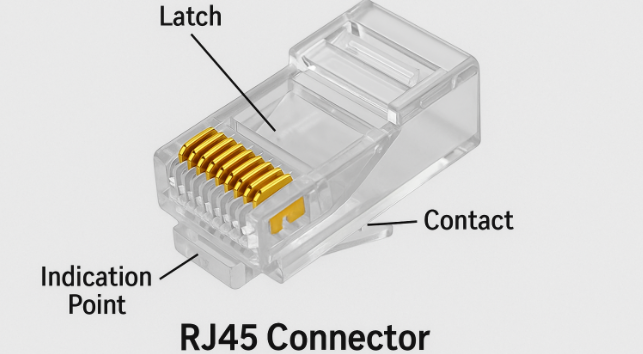
The term RJ45 traces back to the U.S. telecommunications industry, where "RJ" stands for "Registered Jack," a standardized naming system developed to classify telephone wiring interfaces. The "45" simply identifies its sequence within a family of these interfaces. Originally, RJ45 specified a physical connector and wiring scheme for telephone systems, intended primarily for low-speed analog data transmission over twisted-pair copper lines. At that time, it had nothing to do with computer networking or Ethernet.
As computer networks evolved and Ethernet became widespread, the industry began informally using the term RJ45 to describe the 8P8C modular connector that physically resembles the original RJ45 telephone jack but functions very differently. Strictly speaking, what we call "RJ45" in networking is technically an 8P8C connector, but the name RJ45 became so entrenched in common usage that it effectively replaced the precise terminology, even in technical documentation.

The designation 8P8C stands for:
These contacts establish an electrical pathway between the device and the twisted-pair wires inside the Ethernet cable. Despite the widespread misuse of the term RJ45, 8P8C is the precise standard for Ethernet connectors used in LAN applications.
Functionally, an RJ45 jack connector is the universal interface for Ethernet networking. It serves as the termination point for twisted-pair network cables, which are commonly referred to as Ethernet cables. These connectors physically link computers, routers, switches, servers, and other network devices, allowing data packets to move through local and wide area networks.
Key Functional Features of an RJ45 Connector :
Reliable Electrical Contact: The eight precisely aligned pins ensure consistent, low-resistance connections to the copper conductors within the cable, minimizing data loss or transmission errors.
Secure Physical Connection: A molded latch locks the connector firmly into the Ethernet port, preventing accidental disconnections in environments where cables may be moved or pulled.
Support for High-Speed Data Transmission: Depending on the category of cable used (Cat5e, Cat6, Cat6a, etc.), RJ45 jack connectors enable bandwidths ranging from 10Mbps to 10Gbps or higher, making them suitable for everything from basic home internet connections to enterprise-grade data centers.
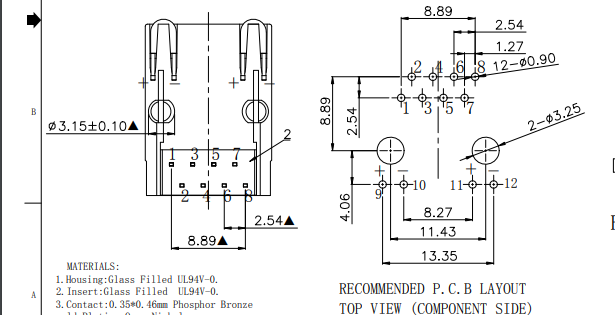
Despite its origins in telephone systems, the RJ45 connector has become the de facto standard in structured networking infrastructure globally. Its continued dominance stems from:
Universal compatibility across Ethernet equipment.
Simplicity and cost-effectiveness in manufacturing and deployment.
Durability and long-term reliability in both residential and industrial environments.
Today, nearly every wired connection in offices, homes, data centers, and even industrial environments relies on RJ45 connectors for fast, stable, and secure networking.
The RJ45 jack connector is a fundamental component in wired network setups, providing a reliable interface for connecting devices like computers, routers, and switches. It is used with twisted-pair Ethernet cables (such as Cat5e, Cat6, or Cat6a), which contain eight copper wires organized into four pairs. These pairs are carefully arranged to align with the eight metal contacts inside the RJ45 jack connector, ensuring a precise and stable electrical connection.
To achieve this connection in practice, the Ethernet cable must be properly terminated with an RJ45 plug. Here's a step-by-step look at How to connect rj45 connector with cat6 cable to ensure optimal signal integrity:
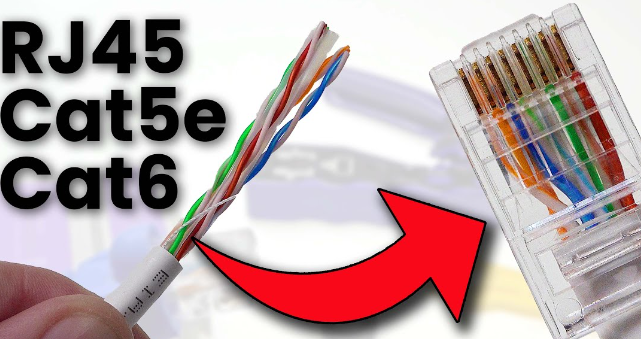
Step 1: Prepare the Cable
Strip about 1 inch (2.5 cm) of the outer jacket to expose the four twisted pairs. Then remove approximately 0.5 inch (1.27 cm) of insulation from each conductor. Straighten and align the wires using either the T568B or T568A standard—T568B is more commonly used for consistency across modern networks.
Step 2: Insert the Wires
Trim the wires to equal length and insert them into the RJ45 plug, ensuring they reach the front and remain flat. Proper alignment is critical; misaligned wires can cause poor contact and data loss.
Step 3: Crimp the Connector
Place the connector into a crimping tool and press firmly to secure the wires. This action drives metal contacts into each wire for electrical connection. Some tools also trim the excess wire in one motion. After crimping, verify that all contacts are correctly seated.
Step 4: Test the Connection
Use a cable tester to check continuity and pin configuration. If the test fails, review the wiring sequence, crimping quality, and strip length. Redo the connection if necessary.
Best Practices and Tips
When terminating Cat6 cables, be sure to follow the same wiring standard on both ends—T568B is typically recommended for compatibility. Avoid removing too much of the outer jacket to preserve shielding and structural integrity. Using quality tools and connectors improves reliability and reduces the chance of signal issues. Finally, if you're new to the process, practice on spare cables before installing critical network lines.
Once you've properly terminated the cable and followed best practices, inserting the RJ45 connector into a network port completes the physical connection. Inside the port, the connector’s metal contacts align with the terminal points, creating an electrical path for data transmission. These electrical pulses represent binary signals that facilitate communication between networked devices, ensuring stable and efficient performance.
Ethernet communication follows industry-specific standards to define how the wires in the cable are used. Protocols such as 100BASE-TX (Fast Ethernet) and 1000BASE-T (Gigabit Ethernet) assign specific wire pairs for sending and receiving data. For high-speed applications, such as 10 Gigabit Ethernet (10GbE), all four twisted pairs are employed simultaneously to maximize bandwidth.
The RJ45 jack connector’s design ensures full-duplex communication, meaning data can flow both ways simultaneously, providing faster and more stable connections. Its precise construction minimizes signal interference and ensures data integrity across a variety of network environments, from small office setups to large data centers.
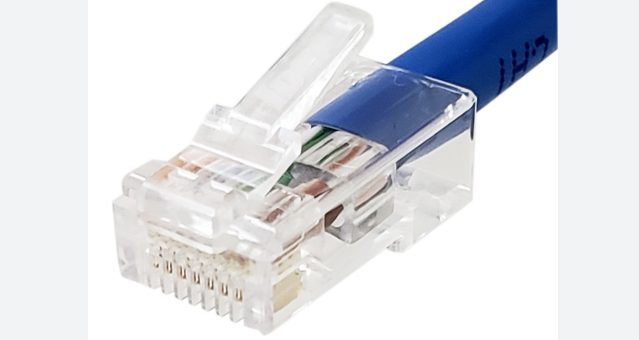
In addition to transmitting data, many RJ45 connections support Power over Ethernet (PoE), which allows a single Ethernet cable to carry both data and electrical power to compatible devices. The power delivered ranges from 15W to 90W, depending on the PoE standard, making it possible to power devices like IP cameras, wireless access points, and VoIP phones without needing separate power cables.
PoE simplifies network installations by eliminating the need for additional power outlets, particularly in locations where it's difficult or costly to install electrical wiring. This functionality reduces both installation time and costs while improving the flexibility of device placement in a variety of environments, including offices, factories, and outdoor settings.
Although all RJ45 connectors follow the 8P8C structure, there are various types tailored to specific cable constructions and application environments.
By Cable Type:
|
Cable Type |
Recommended RJ45 Connector |
Typical Usage |
|
Solid Cable |
Solid-core RJ45 Plug |
Permanent installations, in-wall cabling |
|
Stranded Cable |
Stranded-core RJ45 Plug |
Flexible patch cables, movable connections |
By Shielding Type:
|
Type |
Feature |
Application |
|
Unshielded (UTP) |
No additional shielding |
Standard home and office environments |
|
Shielded (STP) |
Shielding against EMI/RFI |
Industrial settings or high-interference areas |
Solid-core cables are suited for permanent installations like structured wiring behind walls or ceilings, where they offer stable, long-term performance. Stranded-core cables are more flexible and better suited for patch cords or environments where cables are frequently moved or adjusted.
Both RJ45 cables and connectors come in UTP (unshielded twisted pair) and STP (shielded twisted pair) versions. UTP is commonly used in residential and office environments with low electromagnetic interference, while STP offers added protection for industrial settings or data centers where EMI and RFI are concerns.
For harsh environments, some RJ45 solutions offer moisture resistance, dust protection, and tool-free termination, making them ideal for outdoor use or demanding industrial conditions. These enhancements expand the versatility of RJ45 technology across a wide range of applications.
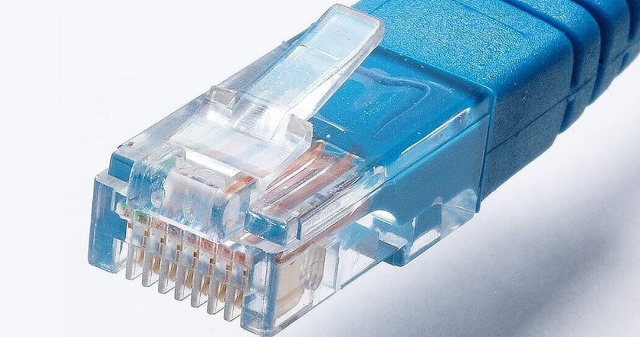
Although Cat5e, Cat6, and Cat6a cables are almost universally paired with RJ45 connectors at both ends, not all Category cables are exclusively tied to this connector type. For most home, office, and general business networks, RJ45 remains the default choice thanks to its broad compatibility and standardized design, making it ideal for typical Ethernet applications.
As network demands have grown, especially in enterprise environments requiring higher speeds and enhanced shielding, some higher-category cables have adopted alternative connector solutions. For instance, Cat7 cables may use connectors like GG45 or TERA to deliver better shielding and performance at higher frequencies. However, many Cat7 solutions still retain compatibility with RJ45 ports to support a wider range of equipment.
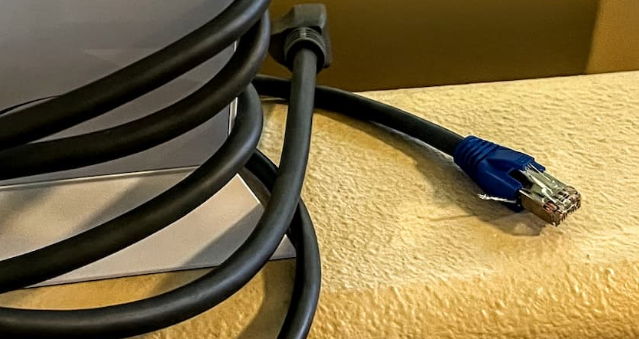
Cat8 cables, built for extremely high-speed data transmission up to 40Gbps over short distances, continue to support RJ45 connectors for seamless integration with existing networks. Yet in some specialized environments, such as data centers or facilities with stricter shielding requirements, alternative connectors might be preferred to meet specific technical or performance standards.
For the vast majority of everyday networking scenarios — especially where speeds do not exceed 10Gbps — RJ45 connectors paired with Cat5e, Cat6, or Cat6a cables remain the most reliable and practical solution. Only in highly specialized or interference-prone environments do alternatives like GG45 or TERA see broader adoption.
Learn more:
https://www.glgnet.biz/articledetail/how-to-set-up-an-rj45-pinout
https://www.glgnet.biz/articledetail/what-makes-a-high-quality-rj45-jack
https://www.glgnet.biz/articledetail/how-to-test-rj45-jack-connections-a-complete-guide
Conclusion
From its origins in telephone wiring to its dominance in Ethernet networks, the RJ45 connector has proven itself as a simple yet indispensable solution for wired communication. Its adaptability, ease of use, and reliable performance have made it the global standard for networking infrastructure.